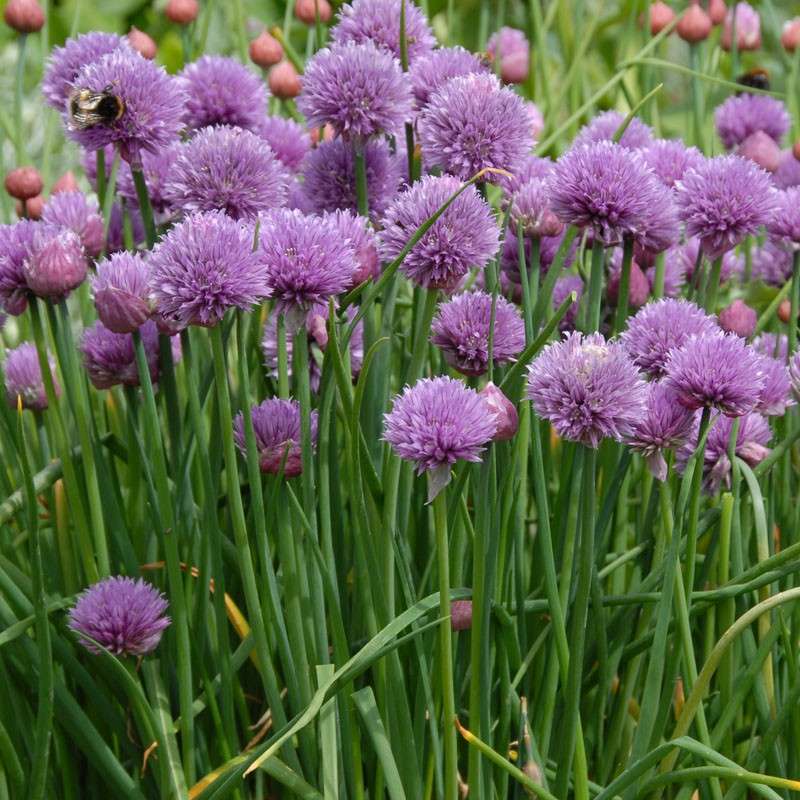
Description
Little white, elongated bulbs and thin, tubular leaves that grow in bunches are the features of chives. Above the foliage, dense, spherical umbels of lilac or blue-colored flowers emerge. Their typical yield is a small number of seeds.
They are a hardy perennial that can withstand drought that reaches a height of 10 to 12 inches. Their circular, hollow leaves are hollow and considerably finer than those of onions, and they grow in clumps from underground bulbs. They yield spherical, pink flowers that resemble clover in the middle of summer.
Habitat
The species is found throughout Europe, Asia, and North America in a circumpolar range. Grassy places beside roadsides and railroads, gardens, weedy meadows, stream banks, and waste areas are examples of habitats.
Uses
In addition to being good for bone health, onions are high in vitamin K and C, which promote healthy blood coagulation and wound healing. They are extremely low in calories and fats to hasten weight loss and have abundant stores of vitamin A, which improves vision.

Varieties
The three other related Allium species that are frequently grown as garden chives, in addition to common chives (Allium schoenoprasum), are as follows:
Garlic chives, or Allium tuberosum, sometimes called Chinese chives, resemble regular chives in appearance but taste less pungent. Garlic chives are always white in blossom, and they have flatter, greener leaves and a little taller stature. They also don’t tolerate the cold as well.
Compared to other chive kinds, giant Siberian chives (Allium ledebourianum) have a stronger onion-garlic flavor and a richer flavor. The plant is taller and has huge violet-rose flowers.
The flavor of Siberian garlic chives (Allium nutans) is akin to onion and garlic. They blossom pink flowers in summertime and have upright, blue-green leaves.
Plant Care
- Light
When placed in full sun, chives flourish. Even though they can withstand some shade, shady areas will lessen the impact of the floral display.
- Soil
Planting chives in well-draining, rich, and wet soil—the same characteristics that onions love—will yield the best harvest.
- Water
Once established, chives are a drought-tolerant plant. That does not imply that you should forgo providing them with water in hot, dry weather. Ensure that chives are kept continuously moist throughout the growing season for an outstanding crop.
You might think about mulching if you can’t always remember to water your lawn. Because chives bulbs are found at the earth’s surface, this may aid in the preservation of soil moisture.
- Temperature and Humidity
The optimum times to gather chives, a cool-season herb, are in the spring and autumn. Chives may occasionally become dormant in the middle of the summer due to intense heat. Because severe cold can also kill off the foliage, pot-grown chives are frequently brought indoors for the winter.
- Fertilizer
Frequent fertilization is not necessary for chives because they do not require a lot of nutrients to survive. However, it is a good idea to fertilize chives with a nitrogen-rich fertilizer once, in late spring or early summer.
Table





